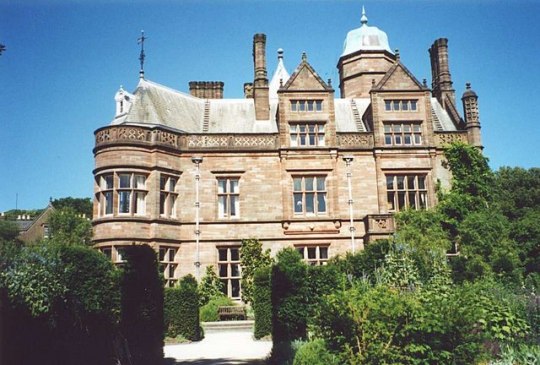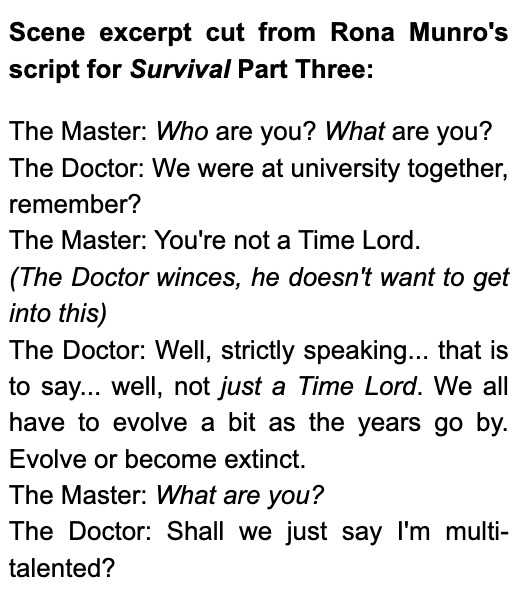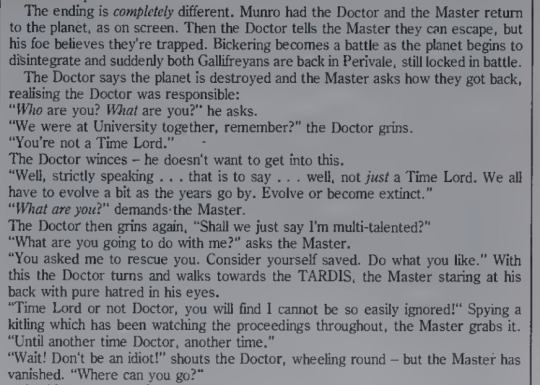#cartmel
Photo

Holker Hall is a privately owned country house located about 2 km to the southwest of the village of Cartmel in the ceremonial county of Cumbria and historic county of Lancashire, England. It is "the grandest of its date in Lancashire ...by the best architects then living in the county." The building dates from the 16th century, with alterations, additions, and rebuilding in the 18th and 19th centuries. The 19th century rebuilding was by George Webster in Jacobean Revival style and subsequent renovations were by E. G. Paley. Hubert Austin had a joint practice with Paley by the 1870s and they both rebuilt the west wing after it was destroyed by a major fire in 1871, only a decade after Paley's previous work on the structure. The fire also destroyed a number of notable artworks. Holker Hall is Paley and Austin's "most important country house commission." The architectural historian Nikolaus Pevsner expressed the opinion that the west wing is the "outstanding domestic work" of Paley and Austin. In 1970 the hall itself, together with its terrace wall, were designated Grade II* Listed buildings. The house stands in an estate of about 80 hectares, and is surrounded by formal gardens, parkland and woodland. Within the grounds are six structures listed at Grade II.
Since becoming a private house following the Dissolution of the Monasteries, the estate has never been sold, having passed by inheritance from the Preston family to the Lowther family, and then to the Cavendish family. The house and grounds are open to the public at advertised times on payment of an admission fee.
In chronostratigraphy, the British sub-stage of the Carboniferous period, the "Holkerian" derives its name from Holker Hall.
#Holker Hall#mansion#private houses#england#cumbria#lancashire#cartmel#xvi century#photo#photography#Architecture
11 notes
·
View notes
Text


I rather like that this is much less the vague "Cartmel Masterplan" "the Doctor has always been something ancient and mysterious," (Remembrance of the Daleks et al) and is a more sinister "the Doctor is turning/evolving/mutating into/WILL BE something mysterious"
317 notes
·
View notes
Text

#sorry chibs i will always transplant the og cartmel masterplan onto this#doctor who#dweu#thirteenth doctor
103 notes
·
View notes
Text
So, uh, with the mention of the Flux in "Wild Blue Yonder" and the brief allusion to the Timeless Child and how the Doctor doesn't know xir own species anymore...
I'm just going to post these snippets from the Eighth Doctor Adventures novel Unnatural History, published in 1999. (Snippet sources.)





#( Bramble watches Doctor Who. )#[ yeah the Doctor having a very mysterious past tied to the Time Lords' origins is NOT new y'all ]#[ the whole Timeless Child thing is basically a modern version of Lungbarrow and the Cartmel Masterplan tied in with Dr Nyarlathotep ]
25 notes
·
View notes
Text
Need someone to write a Rivers of London crossover with Seven and Ace. Series with a strong mentor-apprentice dynamic, where the apprentice keeps making things blow up, with Ben Aaronovitch and Andrew Cartmel specifically working on it. I need this.
#peter and ace would get along#the doctor and nightingale would Absolutely Not#...I think molly might like the tardis though#like as a person. they'd be friends#doctor who#classic who#seventh doctor#ace mcshane#rivers of london#I say 'someone' and I mean a fan writer but lbr it would probably be official if it was legally permitted#and yes cartmel has worked on some of the rol comics
24 notes
·
View notes
Text
Just watched remembrance of the daleks, and it's so crazy, I love it.
8 notes
·
View notes
Text

Today in living my nerdiest possible life, @sol1loqu1st and I found a bunch of Virgin New Adventures books at the sci-fi bookstore today.
Considering the two of us have been friends for a decade specifically because we bonded over the Wilderness Years Doctor Who EU on a writing forum as teens (I was a big Eight guy, they were really into Seven), they were a pretty delightful find. So of course we had to buy matching VNAs for each of our bookshelves.
#nick also picked up another one written by andrew cartmel which we were geeking out about#what a funny and wonderful thing to track down together#nerd alert
37 notes
·
View notes
Text

i'm really, really enjoying Rivers of London
(this is from the first graphic novel, Body Work)
#the art is SO SO GOOD it's GORGEOUS i'm falling in love with these characters even moreeeeee#i WILL buy the box sets#money and space permitting#rivers of london#ben aaronovitch#andrew cartmel#luis guerrero#lee sullivan#comics#graphic novels#pinboard#ttmml
7 notes
·
View notes
Text
The Cartmel Masterplan
The Actual Text, Posted Online for the First Time
A generous friend has shared with me the full text of “Gallifrey: Notes on the Planet's Background” – Andrew Cartmel, Ben Aaronovitch, and Marc Platt’s original outline of their masterplan for the Doctor’s origins – as printed in Virgin Books’ 1996 Doctor Who: A History of the Universe. Please see also Lance Parkin’s explanatory footnote and my commentary beneath!
The planet Gallifrey, world of the Time Lords in the constellation of Kasterborous, is one of the oldest and most powerful oligarchies in the universe. Its political and scientific influence is prevalent throughout the cosmos. But it is a world apart. Its power is substantially used for observation rather than involvement. Over the millennia, its self-imposed isolation has made it a staid and decaying society, obsessed with its own self-importance and tradition. It was not always so…
Ancient Gallifrey in The Old Time or The Dark Time, the Time of Chaos, was a world of both questing endeavour and dark superstition. It was the heart of a space-faring Empire, the hub of trade and commerce between other worlds. But the Gallifreyans were a race cursed with communal telepathy. The majority of the populous shared each others’ minds and thoughts. No mind was alone. The superstitious people worshipped the Menti Celesti – literally, heavenly minds – who were the free-thinking Gods.
By training or natural ability, some Gallifreyans could achieve private thoughts: an individuality above the mass mind of the general populous. They became revered Heroes: great philosophers, scientists and explorers, much in the style of the Greek Heroes, renowned for their deeds and derring-do.
Ancient Gallifrey was governed by the line of Pythias, wise seer women, who saw the future. The Empire prospered under their rule, but for all its enlightened education and scientific advancement, their reign also encompassed barbarism.
Amongst the ideas and goods traded through the Empire, there were also slaves. A primitive Time Scoop was employed to import alien servants and gladiators for the Games enacted in the Death Zone. Such popular “entertainment” provided an outlet for the extremes of emotion that telepathic crowd behaviour could engender. Thus through a skilful mix of manipulation and superstition, the ruling Pythia was able to control Gallifrey and its Empire.
Rassilon, a high ranking Hero, saw that the stifling authority of the Pythias threatened Gallifrey’s true destiny as a supreme galactic power. He stood for the influence of Reason against the Pythian reign of superstition. His skills as a tactician had defeated an invasion of Vampires that threatened the whole galaxy. He knew that Gallifrey could not progress until the aimless telepathic abilities of the people were given purpose. With a group of supporters, he deposed the Pythia and set about the restructuring of all Gallifreyan society. This period of cultural renaissance became known as the Intuitive Revelation.
The followers of the Pythia fled to Karn and set up a quasi-religious cult as guardians of a flame fountain that distilled an Elixir of eternal life.
Rassilon undertook to reform Gallifreyan society and thus consolidate the planet’s supremacy. Aware of the corrupting influence of absolute power, he repeatedly rejected the offers of a coronation, announcing that he could not rule the planet alone.
The suicidal end of the line of the Pythias had one immediate and deadly effect on Gallifrey. The Pythia embodied the fertility of the planet, she was Gallifrey itself. As she took her own life, the last of the line cursed the planet in revenge for her overthrow. Gallifrey became a sterile world. There were no more children. Unborn babies died in their mothers’ wombs. Rassilon was forced to find an immediate answer, before the Gallifreyans became extinct.
Eager to hold Gallifrey to ransom, the Sisterhood of Kam offered the salvation of their elixir. But in the face of disaster, Rassilon was able to forge a fresh solution.
From the existing hierarchy of Gallifrey, a new social design was evolved. Power was shared through a High Council whose members represented the Chapterhouses of Gallifrey. Each Chapter comprised groups of the ancient Families of Gallifrey, of whom Rassilon saw the need for legislative control to stabilise dwindling population numbers.
It was decreed that each Family would have a genetic bank known as a Loom, from which a set quota of Family members would be generated. Bio-genetic engineering would allow the Gallifreyans to regenerate their bodies at the moment of death through a sequence of thirteen lives. At the end of the final life, when a Family member died, a new replacement member was generated on the Family Loom. Parents have not existed on Gallifrey since this time; all family members are Cousins to one another. (This makes the business of Susan being the Doctor’s granddaughter all the more intriguing…)
The Looms were installed in all Family Houses across Gallifrey. Each House was adapted as bio-architecture, programmed to serve and look after its incumbent family. These were living buildings invested with a low degree of sentient awareness, even encompassed in their furniture and fittings.
Families were headed by the most senior Cousin. One other was selected as a Housekeeper, an interactive medium between the Cousins and the living House itself. The House would become as much a part of a Family as its Loom or its Cousins; occasionally with frighteningly possessive results!
The Chapters had their own Academies whose leaders were appointed as Cardinals to serve on the High Council in the newly constructed Vatican-like Capitol. The “Civil Service” members supporting the Council were known as Ordinals. Below them came the plebeian classes, trained as skilled technicians and artisans.
As a symbol of power, Rassilon had the Matrix developed: a vast extra-dimensional panotropic computer net containing all the information amassed by Gallifreyan culture. It stored all research and postulation, and the mind of every dying Gallifreyan passed into its capacity. Thus it could predict the future and give judgement on the past. As such, the Matrix is Gallifrey, the essence of that planet and its culture. In many ways, the Matrix replaced the Pythia, if not in wilful delegation, at least as a living repository of all knowledge.
To achieve his reforms, Rassilon needed vast resources of energy. He found an ally in Omega, the chief of the scientific fraternity and also a Cousin of Rassilon. But while Rassilon was the practical strategist laying foundations for a new society, and Omega was the provider, there was a third, darker figure; an “Eminence Grise”, with whom power was shared in an inner sanctum before plans were laid for the judgement of the High Council.
His origins, birthplace, even appearance are an unrecorded mystery. He never served on the High Council. Some legends hint that he may not have been born on Gallifrey, others that he was endowed with powers far greater than either Rassilon or Omega, but he kept these veiled beneath the Gallifreyan shape he wore. How influential his role really was is uncertain. His presence as part of the Triumvirate has always been overshadowed by the myriad achievements of Rassilon and the martyrdom of Omega; he was known simply as “the Other”. Nevertheless, a minor festival known as Otherstide is annually celebrated in his honour.
Under the rule of the Pythia, experiments had started into time travel. Rassilon deemed their use of telepathy as a travel source to be dangerous, but still rationalised their basic concepts for his own experiments.
To develop time travel as a completely viable facility, Omega estimated that a preliminary energy source equal to a supernova was required. He developed a remote stellar manipulator device which would induce the controlled detonation of a star and channel the energy released back to Gallifrey. This device was known as the “Hand of Omega”.
The device succeeded in its task and Gallifrey acquired the energy source it needed, but Omega, who had gone to oversee the project himself, was lost in the supernova explosion. His sacrifice offered unlimited power to the Gallifreyans. They truly became Time Lords.
In their early days as Time Lords, the catastrophic destruction of the planet Minyos, whose inhabitants sought to emulate their “gods” the Gallifreyans, emphasised the need for radical change in Gallifrey’s role in galactic politics.
After Omega’s death, the remaining two-thirds of the Triumvirate set about consolidating Gallifrey’s position. Two courses were open to the Time Lords: to control the universe as supreme rulers; or to act as guardians, overseeing the natural development of time and space. Either way their own position had to be unassailable. Gallifrey itself had to be protected.
In an astonishing feat of engineering, Rassilon entered the black hole left by Omega’s supernova and sealed its vast singularity energy in an icon of power known as the “Eye of Harmony”. He brought the Eye back to Gallifrey and so balanced the existence of the planet against the colossal energy source of the black star. Gallifrey was now unassailable.
Ironically, the stabilising influence of the Eye of Harmony has surely affected Time Lord society as well. Over millennia, development has steadily ground slower and slower; Gallifreyan culture has become less adventurous, and more complacently staid. The people’s telepathic abilities have also dwindled. Rassilon’s legacy and laws still guide the Time Lords, but the meanings of many of his icons of power are now lost. (The line of Pythias also survives, not only on Karn, but in other offshoot manifestations – witness Lady Peinforte.)
Another product of the Intuitive Revelation was validium, a living metal, created as an ultimate defence for Gallifrey. The metal could think for itself, but in the wrong hands might act as a generator of destruction. It eventually proved itself too dangerous to be employed. Too many enemy forces were gaining access to the element and so the largest section was secreted away from Gallifrey in an asteroid where, it was hoped, it would be safe from interference.
While both Rassilon and Omega were virtually canonised, if not deified, there were no further records of the Other in any of the histories. Speculation says that he left Gallifrey altogether; legend says that he grew weary of being an all-powerful player at the chess game of the universe. Instead he longed to be a pawn on the board in the thick of the action. Common sense says that he retired quietly.
Footnote
This is virtually the whole of the text of a document ‘Gallifrey – Notes on the Planet’s Background (from ideas prepared for the Doctor Who TV series)’ by Andrew Cartmel, Ben Aaronovitch and Marc Platt. The document was written for Virgin, is dated 9.11.90, and comes to six and a half sides of A4 paper, including the coversheet. It outlines what fans have called ‘The Cartmel Master Plan’ – an attempt during the twenty-fifth and twenty-sixth series on television to redefine the origins of the Doctor and that of the planet Gallifrey, to reintroduce mystery to the series’ basic set-up, and to suggest that much of what we had been told about the Time Lords and the Doctor had been deliberately fabricated (as such, it doesn’t answer all the questions it raises). On-screen the ‘Master Plan’ was mainly confined to a handful of obscure references (and a handful more that were cut before broadcast).
The document embraces concepts from The Deadly Assassin, Silver Nemesis, The Five Doctors, State of Decay, The Brain of Morbius, The Invasion of Time, Arc to Infinity, Trial of a Time Lord, Remembrance of the Daleks (and Ben Aaronovitch’s novelisation of his story), The Three Doctors, Underworld, The Time Monster and Planet of the Spiders, as well as two unmade Marc Platt stories, Cat’s Cradle and Lungbarrow. A number of the New Adventures have adopted ideas from the document, including the first two novels by Platt and Aaronovitch, Cat’s Cradle: Time’s Crucible and Transit.
The last half-page of the document outlines the Doctor’s link to his planet’s ancient history and explains the origins of his granddaughter, Susan. It must remain a secret – for the moment at least. Anyone speculating about the contents of this last page ought to bear in mind that the Virgin Writers’ Guide categorically states that ‘The Other is not the Doctor’.
Commentary
With the exception of my italicized note at the top, everything above came from Doctor Who: A History of the Universe, and everything below is written by me, the blogger. Thank you again to my brilliant and talented friend – the Other to my Rassilon – who shared with me the pictures of the above!
A few thoughts based on the above:
As Parkin’s footnote points out, A History omits the last half-page of the original text, which explained Susan’s origin and the Other’s reincarnation into the Doctor. Since A History was released in May 1996, almost a full year before Lungbarrow gave these answers, it makes sense that this part was redacted. But if the details of the First Doctor’s rescue of Susan were written as early as 1990 and known to Virgin’s authors from the start of the New Adventures, how did we end up with the conflicting description of her rescue in Cold Fusion?
Much of this content clearly ended up in Cat’s Cradle: Time’s Crucible, as Parkin’s footnote mentions: the Gallifreyan Heroes, the Pythia, her suicide and curse, etc. (Presumably Lungbarrow just as faithfully adapts the material from the omitted half-page.) But I’m not particularly clear what Transit has to do with it! Was this just Virgin Books plugging their own content, or did I miss something major?
Just as in Time’s Crucible, the authors follow the explanation of Looms by explicitly pointing out the apparent contradiction with Susan calling the Doctor “Grandfather”. Hopefully this will finally kill the longstanding rumor that Looms are bad because they contradict An Unearthly Child: the creators knew exactly what they were doing.
I was clearly incorrect the other day to assert that “no source has actually linked Omega’s star with the Eye of Harmony”! Not only is this explicit in the Masterplan, it’s also mentioned in The Infinity Doctors. Mea culpa!
The Eye of Harmony’s “stabilising influence” being the cause of Gallifreyan societal stagnation was never explicitly explored or stated anywhere in the Doctor Who stories that followed, but it did manifest through the concept of the Anchoring of the Thread in the Faction Paradox series. The Book of the War didn’t merely copy Platt’s “Great Houses” language, it fulfilled parts of the Masterplan that other authors had neglected.
I knew that Quences identified his title as “Ordinal-General” in Lungbarrow, but I’d never caught the Cardinal / Ordinal pun. Too good!
Similarly: I am increasingly uncomfortable with the fact that “Celestis” is clearly a plural noun for “Celesti”, which means I’ll have to rethink all of my grammar 😟
Please let me know your thoughts!
#doctor who#cartmel masterplan#seventh doctor#the other#rassilon#gallifrey#virgin new adventures#lungbarrow#cat's cradle#time's crucible#menti celesti#eye of harmony#pythia#sisterhood of karn#the matrix#great houses#remembrance of the daleks#silver nemesis#effortpost#archival
216 notes
·
View notes
Text
Round Two, Group Three


32 notes
·
View notes
Text
having such a 7girl moment today but literally ive been saying since. maybe as early as 2019 that i knew id love 7 so so much when i got to him and youll never guess whats happening rn
#hes so#i actually really like it when the doctor is very clearly Inhuman and Old and Special. what i dont like is when everyone loves him for it#i prefer it in the cartmel way over the moffat way. basically#i love this guy being a little fucked up actually! i get bored when hes the arbiter of morality#i wanted 13 to be like this more often so bad#and i get that theres limits to how fucked up the dr can be on tv. thats not what the show is About#my point is theres a secret good thasmin that lives in my head where its far more similar to what ace and 7 have going on#and by good i mean So Much More Problematic And Fucked Up#yaz who is 13's attack dog. yaz who is her pet cop#yaz who 13 wants to fashion into a weapon. yaz who wants to be someone's weapon so bad yaz who needs a purpose and the doctor will give one
7 notes
·
View notes
Text
Get a first look at Rivers of London: Here Be Dragons #1
Get a first look at Rivers of London: Here Be Dragons #1 #comics #comicbooks #riversoflondon

View On WordPress
#andrew cartmel#ben aaronovitch#comic books#Comics#david cabeza#david m. buisan#james swallow#jordi escuin#jose maria beroy#rivers of london#riverse of london: here be dragons#titan comics#v.v. glass
16 notes
·
View notes
Text

I just read Action At A Distance and I am absolutely losing my mind over Hesperus, so have another doggie WIP.
#Rivers of London#Hesperus#Hesperus the Goodest Lad#Thomas Nightingale#Action At A Distance#Ben Aaronovitch#Andrew Cartmel#Brian Williamson#Stefani Renne#Rob Steen#fanart#digital art#bloodhound#RoL comics
30 notes
·
View notes
Text
My favourite part of brain of morbius is when he says it's morbin' time and makes every other doctor who writer feel the need to explain something which is only on screen for 5 seconds, and destroy the point of the character of the doctor in the process.

#doctor who#fourth doctor#classic who#timeless child#cartmel master plan#morbius#sarah jane smith#why the fuck do so many people feel the need to explain the morbius doctors its fine just leave it alone the brain fell on the pissing floor
9 notes
·
View notes
Text
I'm not the only one who's seeing this, right?


Brian Williamson totally used Timothy Dalton as a face double for Nightingale in Action at a Distance and I cannot tell you how much I LOVE. IT. And I like the art style, love when it's all sketchy like this. And the colouring by Stefani Renne is all nice and toned down and just oooo I love it. Has a very 70's detective film vibe.
#delightful#rivers of london#action at a distance#awesome art#thomas nightingale#timothy dalton#brian williamson#stefani renne#ben aaronovitch#andrew cartmel#rob steen#rol comics#titan comics
23 notes
·
View notes